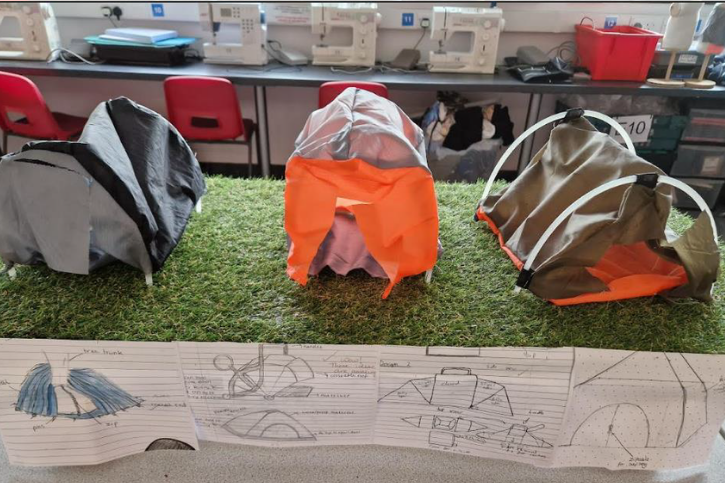Design with a Cause: ‘Inspired by Industry’ RAF – Empowering students to design for real-world challenges
Published 22nd August 2025
Explore temporary shelter design
Teachers looking to bring real-world design contexts into the classroom can rediscover the ‘Inspired by Industry’ RAF context, a versatile resource that allows students to explore temporary shelter design for a wide range of situations, from humanitarian aid and pop-up market stalls to pet carriers.
The context encourages students to experiment with materials, testing properties such as insulation, waterproofing, and durability. It also introduces collapsible structures and mechanical systems, giving students the chance to design both physical and CAD prototypes. Activities range from virtual finite element analysis to hands-on team challenges like building and water-testing shelters. With opportunities for individual or group work, students develop problem-solving and engineering skills while exercising creativity to design functional, adaptable shelters.
Free and member-only resources
‘Inspired by Industry’ is FREE for all teachers to use. Members of the Design & Technology Association gain access to additional member-only Tasks and Activities for even deeper classroom engagement. Explore the RAF context here and the member-only content here.
Teacher perspective: Jo Mumby
Jo Mumby, Head of Design and Technology at North Halifax Grammar School, shared her experience using this resource. She explained that her small, dedicated D&T team had sought to reverse a decline in student uptake for both GCSE and A-Level design and technology. Many of their Key Stage 5 students progress to study Engineering at university, yet few choose A-Level D&T. This prompted a closer alignment of design and technology with engineering concepts from Key Stage 3 onwards.
Jo highlighted how the department streamlined the Key Stage 3 curriculum to focus on Food, Textiles, and Resistant Materials, allowing for deeper learning and more cohesive planning. Through ‘Inspired by Industry’ and other thematic projects, students progress from structured, teacher-led tasks to independent, student-driven projects, building creative confidence, resilience, and a growth mindset.
Real-world impact through student projects
Within the RAF project, students explore social issues such as homelessness, working with local charity Happy Days to design and prototype short-term shelters. They investigate ergonomics, apply anthropometric data, test materials, and explore rapid prototyping methods including 3D printing to create empathetic, functional solutions. Teamwork, creative problem-solving, and iterative design are central to the challenge.
Student feedback
Jo also shared student feedback, noting how engaging and challenging the project was:
“It was fun designing a shelter that would make a difference for many people.”
“I enjoy working together as a team to solve a crisis in the modern world.”
“They were more challenging and expanded your skill sets it was a great experience.”
Encouraging greater engagement in D&T
Early indications at North Halifax Grammar suggest that embedding real-world projects like RAF has helped boost student engagement, with GCSE uptake doubling in recent years. Jo concluded that contexts such as ‘Inspired by Industry’ from the RAF demonstrate how design and technology can inspire students, develop practical skills, and foster confidence and creativity.

Get started today
Teachers looking to connect classroom learning to real-world contexts can revisit this valuable resource at any time, whether free or through member-only content for even greater depth and flexibility.
Back to News


